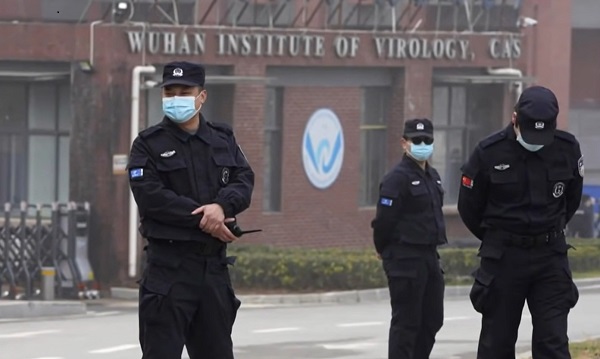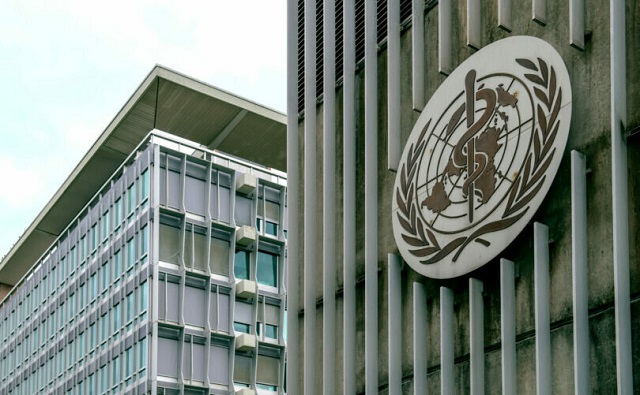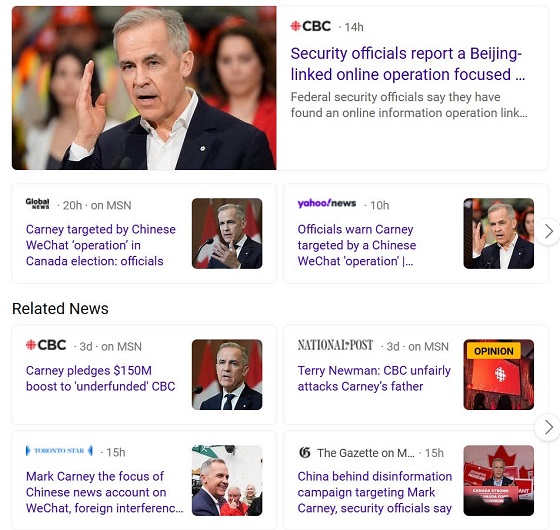International
Prime Minister Trudeau heads to NATO summit, where leaders face critical decisions
Prime Minister Justin Trudeau departs Ottawa on Sunday, June 25, 2023, en route to Iceland. Trudeau is heading to the NATO leaders’ summit in Lithuania this week, where Canada is likely to play a larger-than-usual role in two critical discussions: the alliance’s expanding membership and its efforts to refocus on collective defence. THE CANADIAN PRESS/Sean Kilpatrick
By Sarah Ritchie in Ottawa
Prime Minister Justin Trudeau is heading to the NATO leaders’ summit in Lithuania this week, where Canada is likely to play a larger-than-usual role in two critical discussions: the alliance’s expanding membership and its efforts to refocus on collective defence.
Trudeau is expected to depart for Riga, Latvia, from Ottawa on Sunday evening. He is due to meet with that country’s leaders on Monday before heading to the Lithuanian capital for the first day of the NATO summit on Tuesday.
At last year’s summit in Madrid, NATO leaders identified Russia as “the most significant and direct threat to allies’ security and to peace and stability in the Euro-Atlantic area” in a strategic concept document that set out their intent to strengthen deterrence and defence in the region.
That came after a meeting in Brussels in March 2022, when leaders agreed to deploy four new multinational battle groups on the eastern flank in Bulgaria, Hungary, Romania and Slovakia, adding to those in Estonia, Latvia, Lithuania and Poland.
The alliance has drafted a new defence plan that leaders will be asked to approve in Vilnius, one that is being described as a return to its Cold War stance.
“What we’re seeing now is really a return to NATO’s core business,” said Tim Sayle, a NATO historian and professor at the University of Toronto.
He said this likely also means a return to more challenging negotiations among members as they decide on defence policy and procurement, at the same time as they are debating whether to allow Sweden and Ukraine to join. And on both topics, he said, allies will be looking to Canada.
“Rarely are there summits where Canada would be a focus of any elements, but I do think (it) is here,” Sayle said.
“Canada has a decision to make about its role in the discussion about Ukraine, but it also has this decision to make about Canadian defence spending and just what kind of ally Canada is going to be.”
Adm. Rob Bauer, the chair of NATO’s military committee, told media at a July 3 briefing that the new defence plan is split into three parts: the southeast region including the Mediterranean and the Black Sea, the central region from the Baltics to the Alps and the High North and Atlantic region.
Once the plans are approved, the real work begins. “Then we have to go and do our work to reach the higher number of forces with a higher readiness, we need to exercise against the plans, we need to buy the capabilities that we require,” Bauer said.
That will require more money. Only about a third of NATO members are meeting the agreed-upon target of spending two per cent of their GDP on defence — which includes a pledge to dedicate one-fifth of that funding to equipment.
Bauer said he expects two per cent will be the spending floor, instead of the target, by the time the summit is over.
“There is perhaps a stronger link than ever before between the new defence plans, the new defence investment pledge and the NATO defence planning process,” NATO spokesperson Oana Lungescu said at the July 3 briefing.
For the countries that are lagging behind, there will be increasing pressure to step up.
Canada spends about 1.3 per cent of its GDP on defence and has no public plan to get to the current target. Defence Minister Anita Anand has insisted that Canada’s contributions to the defence of Ukraine and its leadership in heading up a NATO battle group in Latvia are more important.
Before attending the NATO summit, Trudeau is set to participate in meetings Monday with Latvia’s president, Edgars Rinkēvičs, and its prime minister, Krišjānis Kariņš.
Trudeau is also expected to meet Canadian Armed Forces members who are part of the country’s largest overseas mission.
But even in Latvia, Canada seems to be lagging behind. It’s been more than a year since Anand pledged to expand the battle group to a combat-ready brigade, and detailed plans are still being negotiated. Battle groups typically have close to 1,000 troops, while military members in a brigade number about 3,000.
Canada has committed to sending a tank squadron with 15 Leopard 2 tanks and some 130 personnel to Latvia starting this fall, but it is unclear how many more troops will join the 800 Canadians already in place.
Other countries have gone further. Germany has pledged to station a 4,000-soldier brigade in Lithuania. The United Kingdom, which is leading a battle group in Estonia, and the United States, which leads another in Poland, tested their ability to quickly scale up to a brigade earlier this spring.
Leaders in Vilnius are also likely to focus on the status of Sweden and Ukraine, each of which has asked to join NATO.
Last-minute talks aimed at getting Turkiye and Hungary on side with allowing Sweden to become a member have not been successful. Its Nordic neighbour Finland joined most recently, in April.
If Sweden’s membership is approved, Bauer said it won’t take long to adapt the defence plans.
“Sweden is at the table in the military committee, in the North Atlantic Council every week. So they know basically everything already,” he said.
More contentious than that is the issue of when to admit Ukraine.
Some nations are pushing for immediate membership. U.K. Defence Secretary Ben Wallace said last month that he hopes to see an expedited process.
Meanwhile, Trudeau has repeatedly stated that Canada supports Ukraine’s membership “when the conditions are right,” without defining what those conditions are.
Sayle said it’s likely that other countries will expect a clearer response this time given the magnitude of the decision: whether to admit a nation that is in the midst of an active invasion to an alliance focused on collective defence.
“I think that what NATO says about Ukrainian membership will impact both the Ukrainian and Russian strategic calculations in this war, and any peace that might follow,” Sayle said.
This report by The Canadian Press was first published July 9, 2023.
2025 Federal Election
PRC-Linked Disinformation Claims Conservatives Threaten Chinese Diaspora Interests, Take Aim at PM Carney’s Debate Remark

As polls tighten in Canada’s pivotal federal election, a Chinese-language website has published multiple editorials suggesting that a Pierre Poilievre government could threaten Chinese Canadian interests with so-called “anti-China” policy clauses—claiming it could bring “inconvenience to the lives of Chinese people, such as restrictions on the use of social media, reductions in return air tickets, etc.”
During the 2021 federal election, then-Conservative leader Erin O’Toole and MP Kenny Chiu were widely attacked with similar arguments across Chinese-language news and social media. CSIS reporting from 2022, cited exclusively by The Bureau, warned that Chinese-language media in Canada is effectively controlled by Beijing and weaponized during election periods to spread Chinese Communist Party-aligned narratives.
One of the new articles also criticizes Prime Minister Mark Carney’s debate remark that Beijing poses the greatest threat to Canada’s national security—a comment that prompted the Chinese-language editorial to question whether Carney’s statement was “a gimmick to attract attention.”
The articles, published Thursday and Friday by 51.ca, have raised deep concern among some community members. One longtime Chinese Canadian journalist, who requested anonymity due to fear of retaliation, told The Bureau they were alarmed by the messaging and suspected the coverage was driven by election-interference motives.
One of the pieces claimed that “the Conservative Party has written anti-China clauses into the party platform,” referencing a prior story that quickly circulated on Chinese-language social media and triggered fearful discussion.
Citing WeChat commentary on the same article, the journalist pointed specifically to a politically connected figure previously associated with CSIS investigations into election interference networks in the Greater Toronto Area—allegedly tied to clandestine funding channels linked to the Chinese Consulate in Toronto.
Sharing a WeChat forum screen-picture, the diaspora journalist noted:
“The writer said, according to the Conservative’s campaign platform, China’s definition is ‘enemy.’ So what is the impact on Chinese Canadians’ daily life? Facing more discrimination? Fewer flights going back to China? How about using social media? If there is a war, what will happen to Chinese Canadians—like Japanese people were sent to the concentration camps or deported?”
The journalist said the messaging is not only inflammatory, but dangerously manipulative—casting the Conservative Party as a threat to the civil rights and safety of Chinese Canadians, while exploiting historical trauma to provoke fear.
The same 51.ca article—while quoting from the Conservative Party’s platform documents—shifts sharply into misleading commentary. It contrasts the party’s current positions with historical discrimination enacted by the Liberal government of the 1920s.
One of the recent 51.ca articles warns that the Conservative Party’s stance “can easily cause ethnic tensions and even exacerbate anti-China sentiment.”
A second article delivers a similar critique of Conservative policy while also taking aim at Prime Minister Mark Carney, who, in last night’s nationally televised debate, stated:
“I think the biggest security threat to Canada is China.”
That comment, consistent with assessments from Canadian intelligence services and allied Five Eyes partners, was immediately seized upon by 51.ca’s editorial board.
“Carney blurted out that China is Canada’s biggest threat. Is this a deep-rooted idea or a gimmick to attract attention? It is not known yet. But what is certain is that when other party leaders are talking about how to deal with the problems facing Canada itself, Carney is talking about China being the enemy. I really don’t know what’s going on in his mind.”
Both 51.ca articles strategically focus their sharpest criticism on the Conservative Party, portraying its platform as existentially dangerous, while the second treats Carney’s one-line debate comment as a moment of rhetorical overreach.
The Bureau is a reader-supported publication.
To receive new posts and support my work, consider becoming a free or paid subscriber.
Invite your friends and earn rewards
Daily Caller
Daily Caller EXCLUSIVE: Trump’s Broad Ban On Risky Gain-Of-Function Research Nears Completion


From the Daily Caller News Foundation
By Emily Kopp
President Donald Trump could sign a sweeping executive order banning gain-of-function research — research that makes viruses more dangerous in the lab — as soon as May 6, according to a source who has worked with the National Security Council on the issue.
The executive order will take a broad strokes approach, banning research amplifying the infectivity or pathogenicity of any virulent and replicable pathogen, according to the source, who requested anonymity to speak candidly about the anticipated executive action. But significant unresolved issues remain, according to the source, including whether violators will be subject to criminal penalties as bioweaponeers.
The executive order is being steered by Gerald Parker, head of the White House Office of Pandemic Preparedness and Response Policy, which has been incorporated into the NSC. Parker did not respond to requests for comment.
Dear Readers:
As a nonprofit, we are dependent on the generosity of our readers.
Please consider making a small donation of any amount here. Thank you!
In the process of drafting the executive order, Parker has frozen out the federal agencies that have for years championed gain-of-function research and staved off regulation — chiefly Anthony Fauci’s former institute, the National Institute of Allergy and Infectious Diseases at the National Institutes of Health.
The latest policy guidance on gain-of-function research, unveiled under the Biden administration in 2024, was previously expected to go into effect May 6. According to a March 25 letter cosigned by the American Society for Microbiology, the Association for Biosafety and Biosecurity International, and Council on Governmental Relations, organizations that conduct pathogen research have not received direction from the NIH on that guidance — suggesting the executive order would supersede the May 6 deadline.
The 2024 guidance altered the scope of experiments subject to more rigorous review, but charged researchers, universities and funding agencies like NIH with its implementation, which critics say disincentivizes reporting. Many scientists say that researchers and NIH should not be the primary entities conducting cost–benefit analyses of pandemic virus studies.
Parker previously served as the head of the National Science Advisory Board for Biosecurity (NSABB), a group of outside experts that advises NIH on biosecurity matters, and in that role recommended that Congress stand up a new government agency to advise on gain-of-function research. Former Centers for Disease Control and Prevention Director Robert Redfield has also endorsed moving gain-of-function research decision making out of the NIH to an independent commission.
“Given the well documented lapses in the NIH review process, policymakers should … remove final approval of any gain-of function research grants from NIH,” Redfield said in a February op-ed.
It remains to be seen whether the executive order will articulate carveouts for gain-of-function research without risks of harm such as research on non-replicative pseudoviruses, which can be used to study viral evolution without generating pandemic viruses.
It also remains to be seen whether the executive order will define “gain-of-function research” tightly enough to stand up to legal scrutiny should a violator be charged with a crime.
Risky research on coronaviruses funded by the NIH at the Wuhan Institute of Virology through the U.S. nonprofit EcoHealth Alliance typifies the loopholes in NIH’s existing regulatory framework, some biosecurity experts say.
Documents obtained through the Freedom of Information Act in 2023 indicated that EcoHealth Alliance President Peter Daszak submitted a proposal to the Pentagon in 2018 called “DEFUSE” describing gain-of-function experiments on viruses similar to SARS-CoV-2 but downplayed to his intended funder the fact that many of the tests would occur in Wuhan, China.
Daszak and EcoHealth were both debarred from federal funding in January 2025 but have faced no criminal charges.
“I don’t know that criminal penalties are necessary. But we do need more sticks in biosafety as well as carrots,” said a biosecurity expert who requested anonymity to avoid retribution from his employer for weighing in on the expected policy. “For instance, biosafety should be a part of tenure review and whether you get funding for future work.”
Some experts say that it is likely that the COVID-19 crisis was a lab-generated pandemic, and that without major policy changes it might not be the last one.
“Gain-of-function research on potential pandemic pathogens caused the COVID-19 pandemic, killing 20 million and costing $25 trillion,” said Richard Ebright, a Rutgers University microbiologist and longtime critic of high-risk virology, to the Daily Caller News Foundation. “If not stopped, gain-of-function research on potential pandemic pathogens likely will cause future lab-generated pandemics.”
-

 Autism2 days ago
Autism2 days agoRFK Jr. Exposes a Chilling New Autism Reality
-

 COVID-192 days ago
COVID-192 days agoCanadian student denied religious exemption for COVID jab takes tech school to court
-

 2025 Federal Election2 days ago
2025 Federal Election2 days agoNeil Young + Carney / Freedom Bros
-

 International2 days ago
International2 days agoUK Supreme Court rules ‘woman’ means biological female
-

 2025 Federal Election1 day ago
2025 Federal Election1 day agoTucker Carlson Interviews Maxime Bernier: Trump’s Tariffs, Mass Immigration, and the Oncoming Canadian Revolution
-

 Business1 day ago
Business1 day agoChina, Mexico, Canada Flagged in $1.4 Billion Fentanyl Trade by U.S. Financial Watchdog
-

 Health2 days ago
Health2 days agoWHO member states agree on draft of ‘pandemic treaty’ that could be adopted in May
-

 espionage1 day ago
espionage1 day agoEx-NYPD Cop Jailed in Beijing’s Transnational Repatriation Plot, Canada Remains Soft Target






